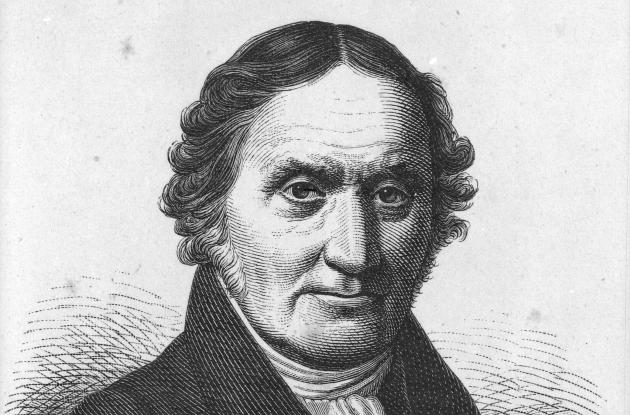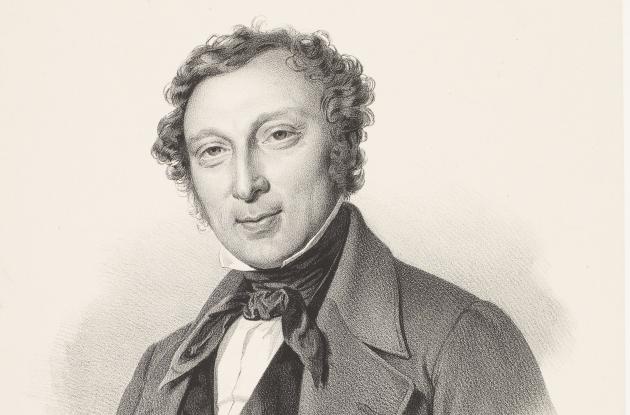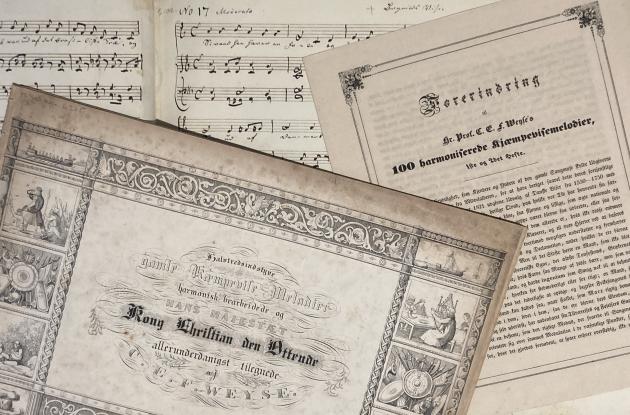Folk tunes for 100 dalers, please!
Weyse provided piano accompaniment for a number of folk tunes - but at first it was not with his good will.
In the first decades of the 19th century, there was a strongly growing interest in the old, especially orally handed down folk songs in Denmark. The interest was both an expression of and at the same time an active contribution to the construction of a Danish national consciousness. Weyse came to play a certain role in that context when, in his last years, he provided piano accompaniment for a number of folk tunes.
Not a matter of the heart
Weyse had already written songs or romances in a folk song-like style, but harmonisations of traditionally handed down tunes were something new in his production. It turned into two booklets, both with the title Halvtredsindstyve gamle Kæmpevise Melodier. The first was published at the end of 1839. It included some of the shows that Rasmus Nyerup and others had made available through the publication of texts and melodies in the years 1812-1814 and 1821.

Photo: Det Kgl. Bibliotek
Apart from the 100 dalers that Weyse had been promised in payment from the publisher, we do not know much about his reasons for taking on the task. Much suggests, however, that it was probably not a matter of the heart for him. Volume two, published in 1842, was based on melodies that Weyse had been sent by Anders Frederik Winding, priest at Himmelev Church in Roskilde.
Winding was one of the era's keen collectors of folk songs. Weyse writes about him in a letter to his foster son Ferdinand Schauenburg Müller on 29 August 1841:
"The letter you sent me was damned not nice, not even from Jürgensen, but from Himmelløv's priest, Mr. Pastor Winding, with the nickname: Boopis, since he is like Homer's army, is in possession of a couple of the most enormous cow- and stare-eyes throughout Christian and anti-Christian Denmark. And what does the man of honour want? annoy me: he has 36 old giant melodies to which he wants me to add harmony, and if I understand him correctly: without a fee!”
From folk tradition to community singing
Weyse was determined to say no. Why he changed his mind after all is uncertain, but he ended up harmonising another 50 tunes and releasing them as booklet two with the same title as the first. For this booklet, Royal Danish Library has as many as two handwritten scores from Weyse's hand, one of which was probably used as a source for the printed edition. On publication, the booklet was accompanied by a printed "Recollection" by AF Winding, which naturally gives a different impression of the proceedings than Weyse's letter:
"After I had rewritten and arranged them [that is, the melodies], I turned to Mr. Professor Weyse with a request to publish them as the first booklet for piano, which he was immediately willing to do.”
On another point, however, Winding's preface touches on something quite central, namely that the old folk songs would hardly have "become as widespread, or as deservedly appreciated, as we imagine that a large part of them already are, if these had not moreover found their way to our houses by being exposed to the Piano”. The folk songs were now played in the common rooms, as Winding writes. Through song and melody books, they were also disseminated to schools and other contexts, where they could then be used as a group song.
But this development came at a price: the songs were disconnected from the living, oral tradition, where they are constantly changing because each singer sings them in their own way. It can be said that the 19th century's desire to raise the folk songs up to be a valuable national cultural treasure paradoxically helped to outcompete the folk song tradition, which was fundamentally individual and changeable. Instead, we got a shared song treasure - and a notion that it represents an ancient, popular song culture.
Adapted to the taste of the time
Most of the original records of the oldest tunes have been lost. The combination of a text with a specific melody has in some cases only happened in connection with a publication, among others with Nyerup and his contemporaries. Therefore, we can often no longer determine to what extent they have been simplified and adapted to 19th century tastes.

Photo: Det Kgl. Bibliotek
In particular, the composer AP Berggreen, who published a very large number of folk songs with piano accompaniment in the second half of the century, did not hide the fact that he found it necessary to adapt and select the melodies for aesthetic reasons in order for them to serve their edifying purpose: To strengthen the national consciousness. On that point he even went much further than Weyse.
In a copy of AF Winding's enthusiastic Recollection, Berggreen has written several critical notes in the margin. He summarizes his comments as follows:
"No No! Weyse's glory shines towards us from other works! not from this and not from his Choral Book! These works, I have reason to believe, he also completed, as it were, in a rest, and as for the folk tunes, I do not know if it would not have been more desirable for Weyse if they had never come to light."
Berggreen would have liked to see that Weyse had been much more particular in his choice of folk songs. Today, on the contrary, we can be grateful that Weyse included so many of them, and we can enjoy them in their own right - if nothing else as a small corner of Weyse's production, regardless of whether they fit into the ideological projects of the 19th century or not.
See the folk songs
- Danske Folkeviser, harmonized by CEF Weyse. His own handwriting. Manuscript, autograph.
- 50 gamle Kiæmpeviser. 2nd booklet . Manuscript, autograph. Possibly a source for the printed version. Attached is AF Winding's "Recollection".
- Fifty old Giant Wise Melodies . 1st and 2nd booklet. CC Lose & Olsen/CC Lose & Delbanco, Copenhagen 1839-1842
